Overusing or overexerting a muscle so that its constantly contracted causes muscle cramping. Foot fatigue on a onewheel is reality for many newer riders. It is your body telling you that the muscles within your feet are working overtime and need a break.
There are seven ways to stopping (or at least reducing) foot fatigue when riding your Onewheel: proper hydration, nutrition, riding technique, stretching, exercise, sneaker inserts & footpad add-ons.
Riding Technique to Avoid Foot Fatigue
Hydration and proper fuel for your body is a must. Assuming you are well hydrated and have had proper nutrition sometime before riding, you want to make sure you constantly carve when riding a Onewheel. Traversing back and forth (similar to a snowboarder) allows for your legs and feet muscles to take micro-breaks each couple seconds or so. These few seconds allow the feet and legs a little reprieve resulting in further rides without aches or cramps. This is going to remediate most of the fatigue newer riders experience.
Calf muscles will commonly also cramp up on a ride especially if you are not traversing (carving). Having a foot or calf muscle constantly constrained will cramp that muscle fast even if you exercise. If your calves are cramping this is a sign that more carving is needed. Learning to do this riding technique is going to instantly improve the comfort of longer rides.
Frequent Stretching and Battery Checking
A good habit when on longer rides is to take a break often – every 3 to 5 miles or so. During this time its a good excuse to check your battery as well to make sure your ride is properly planned. If you do not properly plan your trip with battery range in mind, you may end up doing the walk of shame on your way home. No one wants to be seen carrying their board on the trails.
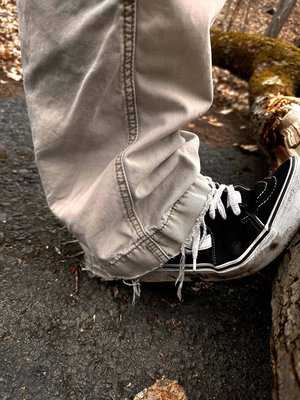
Checking the Onewheel app while stretching your legs against a tree stump or curb will provide some comfort. Lift your toes onto the curb or stump and gently lean forward. This is a good stretch for both the calves and feet. Do this for both legs. A hamstring stretch isn’t a bad idea if your legs are also cramping.
Exercise and Onewheel Riding
There is an absolute inverse correlation to the amount of Onewheel riding you do to the foot cramping you will experience. Over time, the foot fatigue will wane as your feet muscles build. The best exercise for Onewheel riding is to ride a Onewheel! In short time, those muscles will gain endurance for 10+, 15+, 20+ non-stop mile rides.
A word of caution. I often go to the gym to try to stay in shape. I was focusing more on legs to improve my riding. On a leg day, I would work out until failure my quads, calves and hamstrings. The problem is that I thought I could go riding after the work out. Not a good idea. My legs were too sore and actually cramped up more than I had ever experienced. My advice is if you are going to exercise your legs, you really do need to give them time to recover.
Sneaker Inserts for Onewheel Riding
Another way to avoid (or lessen) foot fatigue is to get arch support within your sneakers. This is especially important if you notice the foot pain along the outer-arch side of the foot. Full disclosure on inserts is that I have still use them after upgrading my sneakers.
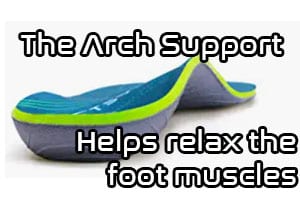
Any insert with added insole support will really improve the comfort. I recommend them for long rides. Most riders say the best sneaker for Onewheeling is a sneaker with a flat sole because it makes for good sensor contact. That being said, Vans are a top choice however there is limited arch support in the sneaker.
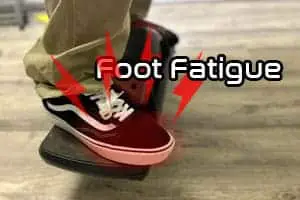
Feet will cramp up without some place for the arch to rest. Adding the sneaker inserts for arch support made a difference however Vans Comfycush is just another level. Checkout my post on these sneakers. Quickly though, if you like vans but they don’t feel well when riding, then try Comfy Cush. These Vans have better insole support for riding.
Onewheel Products for Comfort
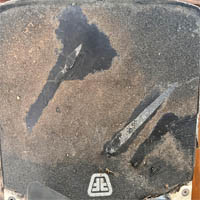
The Onewheel footpad arena is constantly growing. Foam footpads like Pro-Ride traction pads or Flight-Fin’s ‘Flight Deck’ are intended to go over both the rear and sensor pads to add comfort. I have used both and they do help however after 500 miles or so, they will show signs of wear.
They do an amazing job for ride comfort. Another rider tried my CBXR for a trail ride and he said riding it “felt like a Cadillac”. That always stuck with me. Even though these pads are no more than a 1/2 inch thick, the foam does a great job in preventing vibration from transferring from the terrain to your feet.
An inexpensive solution is to use fishbones. This is another product that is applied to the top of the footpad to create a concave feel of the footpad without having to replace the entire footpad. They achieve the exact feel as a concave pad, they just have a different look and appeal.
The reason why the GT was issued with concave footpads and why so many riders desire concavity is because it stretches the foot out. Concave pads allow for the feet to stretch. Just incorporate some carving and the foot fatigue starts to slowly go away in time.
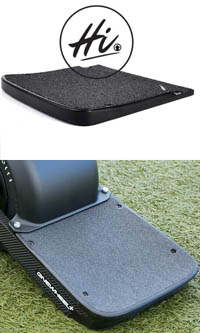
If you need Concavity or more of it, getting a Kush concave pad or Platysense pad for the ride in my opinion. These are not softer however the concavity will still provide that relief in the foot while riding. The flight decks are also concave and more affordable however for a longer last, I would replace the whole footpad rather than going over it.
Platysense and Kush are probably the most popular aftermarket (non-foam) solutions for foot fatigue. Try foam out and then try these. I really enjoy foam pads. Even if they wear out, they are worth replacing in my opinion.
Conclusion
Foot fatigue is real and does happen to experienced riders. You may even experience your onewheel wobbling when your feet are tire. If your Onewheel wobbles, this may mean its time to take a break and stretch those feet out. Also, engaging different muscles by carving helps relieve the parts of your body that are actively engaged while riding.
Don’t just buy sneakers because I or someone recommended them as the best sneakers for riding Onewheel. Choose a sneaker that has good contact with the sensor but also provides comfort. If you cant get good comfort from your sneaker, you can always add a foot insert (I feel these are underrated). Plenty of good concave footpads to buy. You can always also go with a foam one, but they just may not last as long as you’d like.

8 thoughts on “Feet Cramping on a Onewheel? How to Prevent Foot Fatigue”